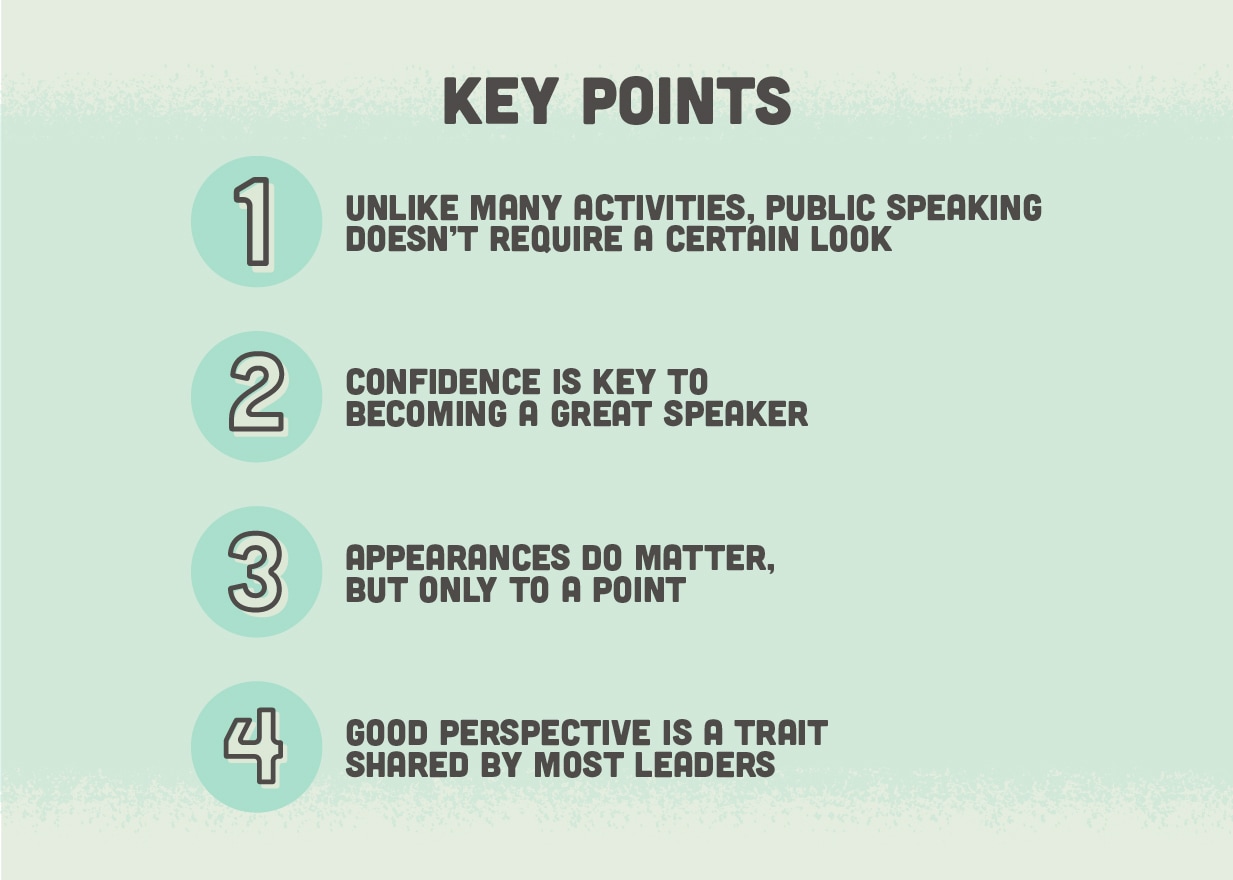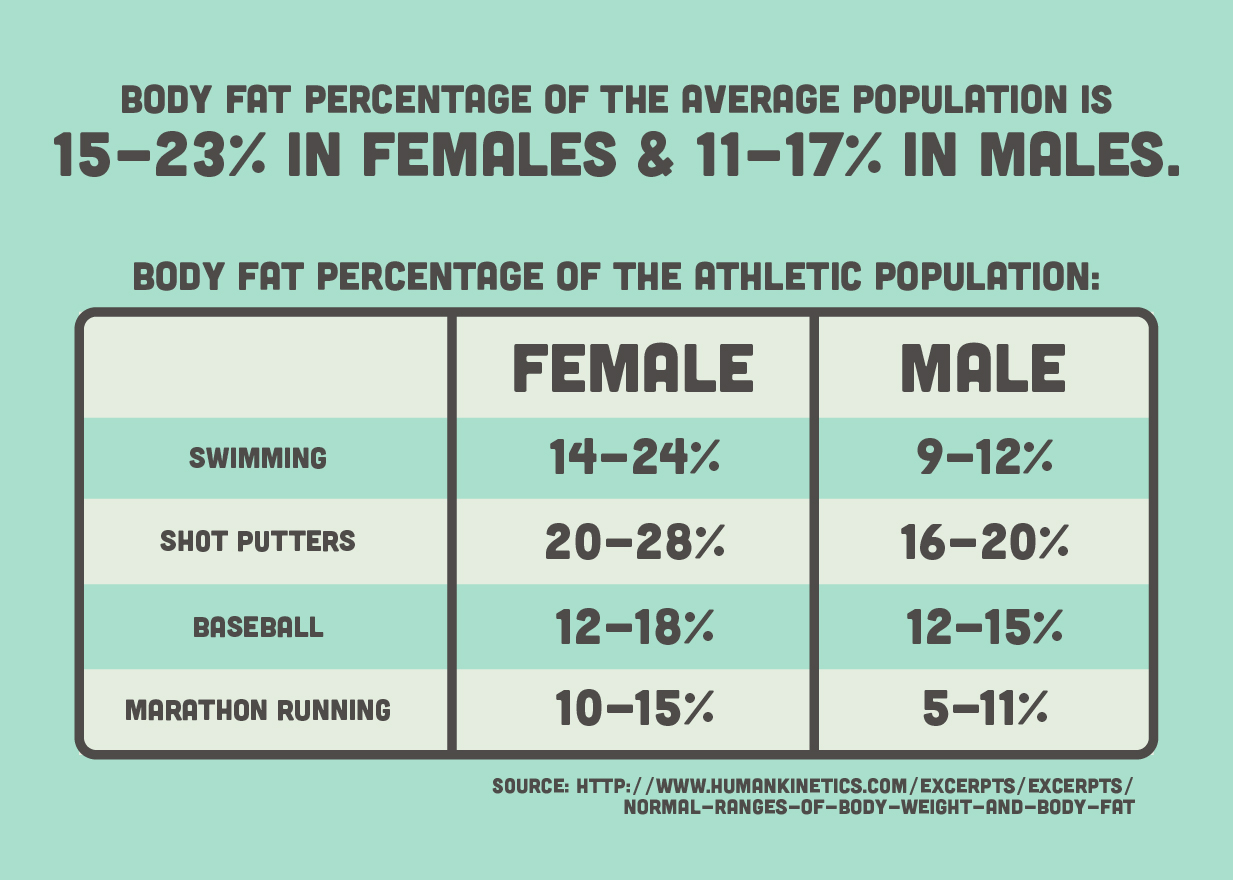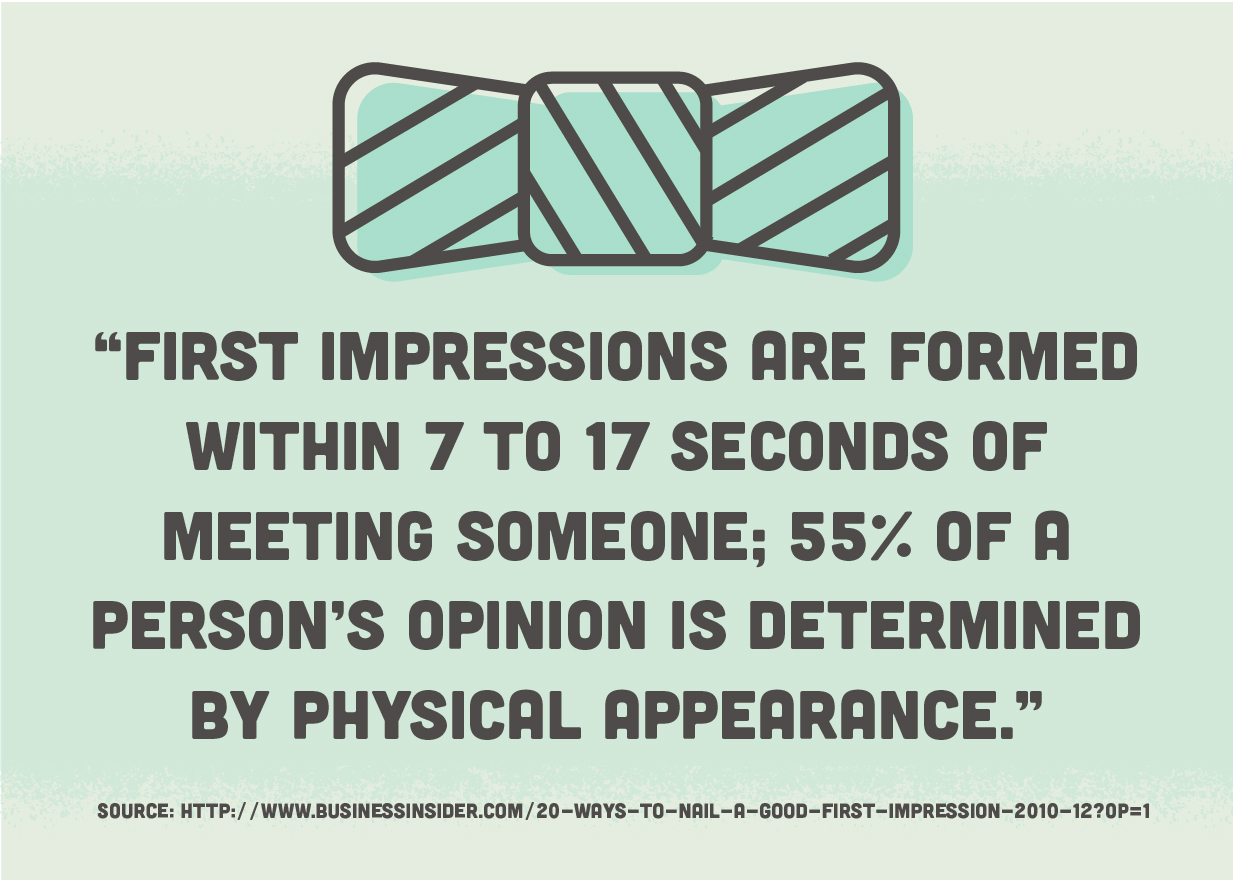
A world class swimmer tends to have a certain body type; they generally have long torsos and arms to match, with a low body fat percentage (around 9% for men, compared to 17% in the general population, according to Sport Nutrition). Shot putters, to take an example from the other end of the spectrum, have their own ideal shape (up to 20% body fat). These sports have vastly different demands of their elite athletes, and those requirements are manifest in the appearance that many of those top performers literally embody. It’s physics at work, more or less.
The same is not necessarily true of comparatively more mental pursuits — computer programmers and art historians do not have an evolutionary incentive to be six feet tall or caked with muscle, for instance. Unlike NBA basketball or Olympic weightlifting, you are not automatically disqualified from becoming a voracious reader or wine aficionado if you are on the wrong side of 40 with a spindly set of legs.

Without a predictable set of physical indicators, it can be difficult to tell what makes a good philosopher or chess player. As a result, there really isn’t a shorthand for figuring out how to become one. The same is generally true of public speakers and presenters, a subset of intellectual performance that truly has no ideal archetype. Inspirationally great presenters can, and do, look like anyone, and it’s never too late to become one. And while there are no strict requirements, per se, here are a few qualities that many excellent public speakers share.
Confidence
It’s difficult to inspire confidence in others when we don’t have it ourselves. Inc. Magazine points out that many times, when we’re confident in our own relevance, we are inclined to be more complimentary of others, setting off a chain of confidence-building:
“Insecure people constantly doubt their relevance, and because of this, they try to steal the spotlight and criticize others in order to prove their worth. Confident people, on the other hand, aren’t worried about their relevance because they draw their self-worth from within. Instead of insecurely focusing inward, confident people focus outward, which allows them to see all the wonderful things that other people bring to the table. Praising people for their contributions is a natural result of this.”
Though we all develop our ego in early childhood, by the time we reach adulthood, that sense of self has typically evolved to attach a negative perception to overconfidence and arrogance. It’s a fine line to walk, but most experts agree that it’s beneficial to have an appropriately positive opinion of ourselves:
“[Y]ou’d do well to embrace a little dose of narcissism in the workplace, too. In one study, leaders took a narcissism test, after which their employees rated them on their leadership skills.
Leaders with low and high narcissism received the worst ratings. Employees of moderately narcissistic bosses, however, saw them as people who lead with courage, conviction, and compassion.”
To achieve this optimal sensibility, try writing down all your emotional accomplishments for a week, says psychologist Dr. Craig Malkin, whether they are times when you were honest or thoughtful, or whatever motivates you. Counterintuitively, you may also find that opening up to and depending on others will coincide with an improvement in your self-assessment. Humans are social creatures, and when we strengthen our social network, we may experience a small ego boost from the satisfaction of participating.
Style
For some people, dressing presentably can have a significant impact on their confidence, which would really make it an indispensable tactic. Even if that’s not the way you’re wired, it’s undeniable that a professional look projects an attitude that values preparation and perception, and is an easy way to spot someone who takes their role as presenter seriously. According to Business Insider, “first impressions are formed within 7 to 17 seconds” of an introduction. Furthermore, some 55% of that first impression is informed by physical appearances.

That doesn’t mean you have to look or dress like a model, however. An outfit and disposition that implies effort and thoughtfulness is more than enough, and if you have the personality and brand to pull off a black turtleneck and jeans, then so be it. The main goal is professionalism, and it’s something we have written about previously on this blog:
“You, the intrepid presenter, are being pumped full of maxims and guidance and shipped off to be scrutinized by a highly critical audience. Eventually, you’ll be judged on the merits of your contributions, but the first things your peers will notice about you are the things they can immediately sense: chiefly, your appearance.”
While the successful presenter will anticipate that her audience will be analyzing her attire and account for it, an overcorrection to a showy, loud wardrobe can be as problematic as a slothful approach. Again, from Inc. Magazine:
“People are turned off by those who are desperate for attention. The truly confident know that being yourself is more effective than trying to prove you’re important. People tend to read attitude quickly, and they’re more attracted to the right kind of attitude than what, or how many, people you know. Confident people always seem to bring the right attitude.
Confident people are masters of attention diffusion. When they’re receiving attention for an accomplishment, they quickly shift the focus to all the people who worked hard to help get them there. They don’t crave approval or praise because they draw their self-worth from within.”
Different people wear their success and ambition in different ways, which is why a professional sense of style is both exclusive and egalitarian at the same time. It does require a minimal effort, but an appropriate look can be achieved for any occasion irrespective of shape, size, or means. When it comes to the speaker’s style, it really is the thought that counts.
Perspective
It’s more difficult to see this trait with the naked eye, but realistic perspective is nevertheless key to great speaking. Like professional attire, it, too, frequently goes hand in hand with self-confidence. Perhaps the most prominent way that we use perspective is when we determine what is important and what isn’t — what will stay in a presentation and what won’t, which projects provide value for our company and which do not. Saying no to an assignment, whether or not the analysis is sound, is one way to employ perspective.
“Passivity in the workplace can be as detrimental to productivity as inappropriate aggression, and since humans are socially conditioned to think saying “No” is confrontational behavior, most of us are much more inclined to say “Yes!”, irrespective of the context. And we say it too much.”
You may identify someone who is good at making those sorts of decisions by recognizing a high level of satisfaction in the workplace. Research has shown that people who can’t say no are more likely to be unhappy and stressed at their jobs and, worse, are more likely to receive additional burdensome tasks as a result of their inability to refuse — compounding the problem. All the while, the person projecting a contented, pleasant attitude is reaping the rewards of having an appropriate perspective. These happy worker bees should be easy to find. According to a Gallup poll, some 70% of workers are “not engaged” at work. Having the freedom and perspective to control their own workflows would likely help those employees feel more passionate and committed.
Conclusion
For a medium that focuses on presentability, presenting doesn’t emphasize as many visually obvious traits in its expression as you might expect. As a result, it may not be as easy to spot a skillful public speaker as it is to pick an elite athlete out of the pack, but looking for a confident, put-together person with a good perspective is a good start.
